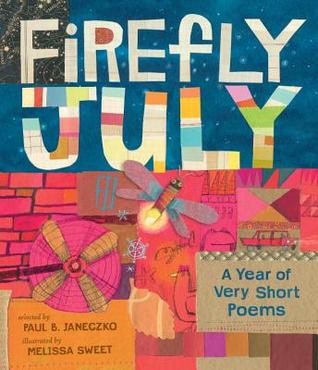I
confess: I clip articles almost daily from printed
newspapers and magazines delivered to my address.
(Home-delivered
newspapers? How about THAT for dating
myself?!)
Article-clipping
is a Family Thing.
My
mother clipped. My sister still clips.
My
nieces and cousins do too.
Recipes.
Advice columns. Interviews. Book reviews.
Movie write-ups. Funny cartoons. Touching quotes.
Oh,
and death notices and marriage announcements.
In
other words, anything and everything that when sent says, “I saw this and I
thought of you!”
I
and my family’s current generation of women use – with great optimism, the U.S.
Mails to share our clippings.
The
younger generation sends link-bearing emails or attached scans.
For
obvious reasons, many of the articles my family sends on to me pertain to
writing, children's books and authors.
Those clippings have a pile all their own, a pile I, the Happy Clipper add to often.
I call it My Writer’s Pile and it’s totally separate from my Story Ideas
Pile.
Sometimes
when I’m clipping an article, or truthfully, unevenly tearing out a section of
a page, I have no idea WHY.
The
piece or item simply spoke to me and I think, “I bet I could use this someday.”
Sometimes,
though, I know the recipient instantly– a fellow writer, a former student, a
school class I’m about to visit, or even my TeachingAuthors readers.
Thinking
Spring, I titled this post “A Writer's Potpourri of Clippings."
In
checking the correct spelling and definitions, however – “a mixture of flowers,
herbs, and spices that is usually kept in a jar and used for scent” and “a
miscellaneous collection,” my eyes slipped down the page to discover the word’s
1749 origin – the French words - “pot pourri” for “rotten pot.”
Which
got me thinking…
I
often liken the writing process and that of growing a story (as well as a
career) to the process inherent in maintaining a compost pile and its clippings.
Maybe
magic of sorts is going on within My Writer’s Pile and I don’t even know it!
Toss
the following three clippings into your Writer’s
(Compost) Pile and see what happens.
FLORAL NAMES FOR BABIES
HAS BECOME A BLOSSOMING
TREND
By
Nara Schoenberg, Tribune Newspapers – March 4, 2014
 “Plant-based
baby names for girls overall are on the rise, and 10 previously low-profile
botanicals – Lily, Violet, Willow, Hazel, Ivy, Olive, Dahlia, Juniper and
Azalea – have risen rapidly.
“Plant-based
baby names for girls overall are on the rise, and 10 previously low-profile
botanicals – Lily, Violet, Willow, Hazel, Ivy, Olive, Dahlia, Juniper and
Azalea – have risen rapidly.
These
10 fast-rising names were given to a total of 19,500 baby girls in 2012 – more
babies than received the No. 3 girls’ name, Isabella (18,900), according to
data from the Social Security Administration."
I
sent the original of this article to Cousin Jane in New Jersey whose first-born
granddaughter is named Violet – after - I scanned and filed the article on my
computer’s Hard Drive.
FYI:
apparently there’s no parallel botanical trend in naming boys although the
nature name “Canyon” has had recent traction (No. 1,462).
Naming
characters is any writer’s job!
(Photo courtesy of Morgue File/mirabbi249-37-0)
WRITTEN IN INK
An eclectic blog
uncovers the tales behind strangers’ tattoos
By
Lauren Morrow, O Magazine - April, 2013
 I
loved reading about and visiting illustrator Wendy MacNaughton’s and writer
Isaac Fitzgerald’s blog Pen & Ink which reveals “the
often hilarious, sometimes poignant stories behind these permanent remnants of
our fleeting opinions, passions, and phases.”
I
loved reading about and visiting illustrator Wendy MacNaughton’s and writer
Isaac Fitzgerald’s blog Pen & Ink which reveals “the
often hilarious, sometimes poignant stories behind these permanent remnants of
our fleeting opinions, passions, and phases.”
Apparently
I wasn’t alone.
I
haven’t used the idea or passed it on – ’til now.
Don’t
you wonder sometimes, when you see an inked dolphin peeking out above a
neighbor’s collar, “Why a dolphin?”
Or
just what tattoo you might choose, if
you haven’t already, and you want to break loose?
A
character’s tattoos are a great way to come at knowing your Hero and knowing
your Villain.
MIXED-MEDIA MAVENS
Artists’ book celebrates
the
freedom and craft of art
journaling
By
Heather Schroering, Tribune Newspapers – April 20, 2014
Another
two-partner idea – this time by Jenny Heid and Aaron Nieradka: scrapbooking
with more layers and textures.
 When speaking to Young Authors, I
advocate Journaling every chance I get.
When speaking to Young Authors, I
advocate Journaling every chance I get.
I
liked the fun idea this article suggested of adding Ephemera – such as
handwritten letters, maps, vintage photos, fabric, movie and concert tickets,
old game pieces, you-name-it.
I
bet kids would like it too!
And
instantly they’d SEE the value of concrete details.
I
also think it’s yet another way for writers, young and old, to come at knowing
their characters – and that’s why I scanned this article and emailed it to two of
my writers.
For
the record, and though a Luddite at heart,
I
do actually read newspapers, journals and magazines online daily and find myself
more and more (sigh) cutting-and-pasting, copying and/or scanning and emailing myself links to fascinating articles.
I
hate to waste an interesting idea!
Esther
Hershenhorn











.JPG)









.JPG)








